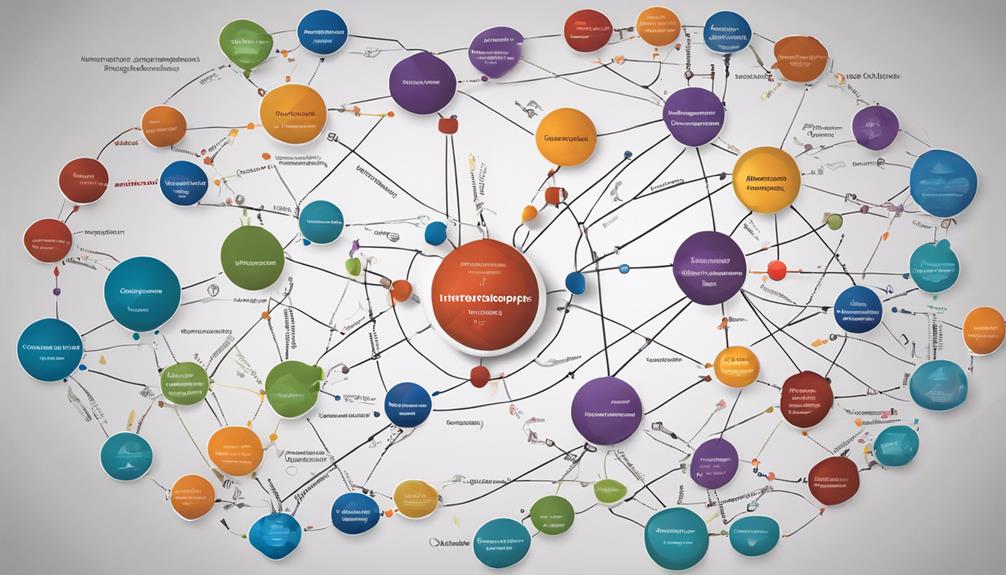Strategic Analysis and Decision-Making in Pre-Deal Planning

Strategic analysis and decision-making play a pivotal role in pre-deal planning, particularly in mergers and acquisitions. It is crucial to delve deep into the target company's internal resources, capabilities, and core competencies. This allows us to gain a comprehensive understanding of their strengths and potential synergies with our own organization.
Simultaneously, we need to carefully evaluate the external landscape, identifying market trends, competitive forces, and regulatory environments that could impact the deal.
Assessing key stakeholders is also essential in pre-deal planning. Understanding their interests, concerns, and objectives can help us anticipate potential challenges and proactively address them.
Moreover, a thorough evaluation of the target company's financial viability is critical. We must analyze their balance sheets, income statements, and cash flow projections to ensure that the deal is financially sound and aligns with our strategic goals.
By meticulously analyzing the internal and external factors, engaging with stakeholders, and conducting a detailed financial assessment, we can make well-informed decisions that set the stage for a successful merger or acquisition. This strategic approach not only maximizes the potential for value creation but also positions the combined entity for long-term success.
The pre-deal planning process is complex and requires careful consideration of various factors, but the effort invested upfront can ultimately lead to a fruitful and sustainable partnership.
Key Takeaways
Before initiating any merger or acquisition, it is crucial to conduct a comprehensive internal assessment to gain insights into the organization's resources, capabilities, and core competencies. This analysis helps in identifying competitive advantages that can be leveraged during the acquisition process. Understanding what sets your organization apart is key to positioning yourself for success in the deal-making landscape.
In addition to the internal assessment, a thorough analysis of the external landscape is essential. This includes studying industry dynamics and macro-economic factors to pinpoint potential acquisition opportunities and stay informed about market trends. By staying attuned to external factors, organizations can better anticipate market shifts and strategically position themselves for growth through acquisitions.
Engaging key stakeholders early in the pre-deal planning phase is vital for building trust and gaining support for the strategic initiative. By involving stakeholders from the beginning and addressing their needs and concerns, organizations can ensure a smoother transition and increase the likelihood of success in the acquisition process. Building strong relationships with key stakeholders can also help in navigating potential challenges that may arise during the deal-making process.
When assessing a potential target company, a detailed scrutiny of its financial statements, cash flow, and debt structure is necessary to evaluate its financial viability and ability to fulfill commitments post-acquisition. Understanding the financial health of the target company is crucial for making informed decisions and mitigating financial risks associated with the acquisition.
Ultimately, it is imperative to ensure that any potential acquisition aligns with the organization's strategic objectives, core strengths, and growth strategies. By choosing acquisitions that complement the existing business model and contribute to long-term growth, organizations can establish a solid foundation for successful integration and maximize the benefits of the deal. Strategic alignment between the acquirer and the target company is key to realizing synergies and creating sustainable value for all stakeholders involved.
Understanding the Internal Environment
Analyzing the internal environment is a crucial initial step in strategic planning because it allows us to gain a deep understanding of our organization's resources, capabilities, and core competencies. This introspective process is essential for identifying our competitive advantages and pinpointing areas where we can improve or capitalize on.
Through a thorough examination of our internal environment, we acquire valuable insights that guide our strategic decision-making. We assess factors such as organizational structure, company culture, and leadership style to understand how these elements influence our decision-making processes and overall performance.
This detailed exploration helps us align our organizational goals with strategic initiatives, ensuring that our efforts are optimized for maximum impact.
Understanding our internal environment is pivotal for enhancing our competitive position. The knowledge gained from this rigorous analysis empowers us to make informed, data-driven decisions that leverage our strengths and address our weaknesses.
This strategic approach is essential for fostering innovation and achieving sustainable growth in today's ever-changing business landscape.
Assessing the External Landscape
As we delve into our internal assessment, it's crucial to also examine the external landscape to pinpoint potential acquisition opportunities and grasp the broader market dynamics. This external analysis entails scrutinizing market trends, competitor activities, and regulatory shifts that could influence our pre-deal planning process.
Our focus will be on understanding industry dynamics, like market growth rates, entry barriers, and competitive pressures, to identify the most appealing acquisition targets. Macro-economic factors such as GDP growth, inflation rates, and interest rates will also play a key role in our strategic analysis of the external environment.
By conducting a PEST analysis and applying Porter's Five Forces framework, we can gain valuable insights into the industry's structure and competitive landscape.
This comprehensive external evaluation, in conjunction with our internal assessment, will provide us with the knowledge necessary to craft a robust acquisition strategy that aligns with market realities.
Through a thorough examination of both the internal and external environments, we can make well-informed, data-driven decisions that position us for long-term success in the pre-deal planning process.
Identifying Key Stakeholders

Key stakeholders are the key individuals and groups with a strong interest in the pre-deal planning process. Engaging these stakeholders early on is crucial to build trust, gain their support, and ensure a smoother negotiation and integration process. These stakeholders include company executives, board members, investors, employees, regulators, and customers, each with distinct needs and expectations.
Performing a comprehensive stakeholder analysis is vital for prioritizing communication, addressing potential conflicts, and aligning the M&A process with our strategic goals. By understanding the role and influence of each key stakeholder, we can tailor our approach to meet their requirements and maintain their involvement throughout the pre-deal planning phase. This collaborative approach won't only enhance our negotiation efforts but also establish a solid groundwork for a successful post-merger integration.
Identifying and managing key stakeholders is a critical aspect of strategic analysis in pre-deal planning. It demands attentiveness, empathy, and a profound understanding of how to navigate the intricate network of interests in mergers and acquisitions.
Evaluating Financial Viability
Analyzing the financial viability of the target company stands as a crucial element in our pre-deal planning efforts. Our focus will be on scrutinizing the company's financial statements, cash flow, and debt structure to gauge its overall financial well-being. Key metrics such as EBITDA, revenue growth, and profitability ratios will offer valuable insights into the target's performance and future prospects.
Understanding the target's capital structure and funding sources is imperative for assessing its financial viability. We'll delve into cash flow projections and conduct comprehensive analyses to evaluate the company's capacity to meet its financial commitments. By examining the target's historical financial performance and comparing it against industry standards, we can gain a profound understanding of its position in the market.
This thorough financial assessment will provide us with the necessary knowledge to make informed decisions and negotiate the most favorable deal terms.
Our meticulous approach to evaluating financial viability will serve as a cornerstone of our strategic analysis and decision-making process.
Aligning With Strategic Objectives

Aligning the strategic objectives of the target company with our own is crucial in the initial planning stages of a merger or acquisition. This alignment ensures that the acquired entity will be a good long-term fit and contribute positively to our overall goals.
By focusing on strategic alignment, we can make informed decisions at every step of the pre-deal phase – from selecting potential candidates and negotiating terms to determining valuation. This strategic roadmap helps us carefully assess the suitability of potential targets, considering how they align with our core strengths and growth strategies.
Our strategic objectives act as a guiding principle, helping us seamlessly integrate the acquired company into our business model and create lasting value. We conduct a thorough analysis to evaluate how the target's objectives, capabilities, and market position align with our own.
This methodical approach enhances the chances of a successful integration, enabling us to leverage synergies and foster innovation in the future. By prioritizing alignment with strategic objectives, we lay a solid foundation for the acquisition within our organization's long-term vision.
Frequently Asked Questions
What Is the Pre Deal Phase of M&A?
During the pre-acquisition phase, companies actively search for suitable targets, meticulously analyze potential synergies, evaluate cultural compatibility, and conduct thorough valuations. These steps are crucial in selecting an acquisition that can enhance operational efficiency, expand market reach, and gain a competitive edge through a seamless integration process after the merger.
What Is the Deal Strategy of M&A?
We are the masterminds behind successful acquisitions, developing strategic approaches that seamlessly incorporate target companies, uncover synergies, and position our organization for expansion. Throughout this process, we prioritize assessing cultural alignment and determining appropriate valuation to ensure the integration is smooth and beneficial for all parties involved.
What Is the Due Diligence Process Before Acquisition?
We conduct a comprehensive analysis of the target company's pre-acquisition risks, assess its position in the market, model its financial projections, identify potential synergies, and review the legal and regulatory landscape. This in-depth evaluation allows us to make well-informed decisions, negotiate effectively, and strategize for a smooth post-merger integration.
By delving into the target's risks and opportunities, we aim to gain a complete understanding of the business and its potential for growth. This analytical approach helps us to uncover any potential pitfalls or hidden value that may impact the success of the acquisition.
Our focus on assessing the market dynamics and financial performance of the target allows us to determine the feasibility and profitability of the acquisition. By analyzing key financial metrics and market trends, we can better evaluate the target's value and its fit within our strategic objectives.
Identifying synergies between our company and the target is crucial for maximizing the benefits of the acquisition. By pinpointing areas where collaboration can create value, we can unlock new opportunities for growth and efficiency across both organizations.
Reviewing the legal and regulatory aspects of the acquisition is essential to ensure compliance and mitigate any potential risks. By conducting a thorough examination of the legal framework and regulatory requirements, we can navigate the complexities of the deal with confidence and minimize potential obstacles.
What Is a Strategic Deal?
Strategic deals involve creating synergistic value through consolidating markets, integrating post-acquisition operations, and assessing growth potential. This process is viewed through the lenses of innovation, talent, and financing to stay ahead of competitors.
Conclusion
With a comprehensive analysis of the internal workings, external influences, and key players involved, we've meticulously ensured that this pre-deal planning process is both financially sound and strategically aligned.
Drawing on our extensive industry expertise and acute attention to detail, we've developed a detailed strategy that's poised to drive us forward, leaving no aspect unexplored in our pursuit of success.
It's time to put on our thinking caps and turn this deal into a reality.